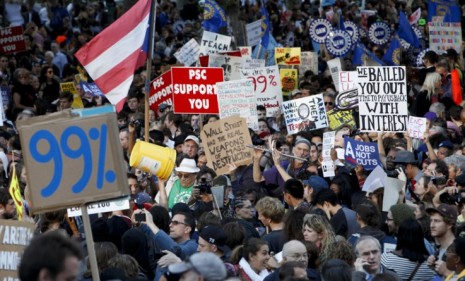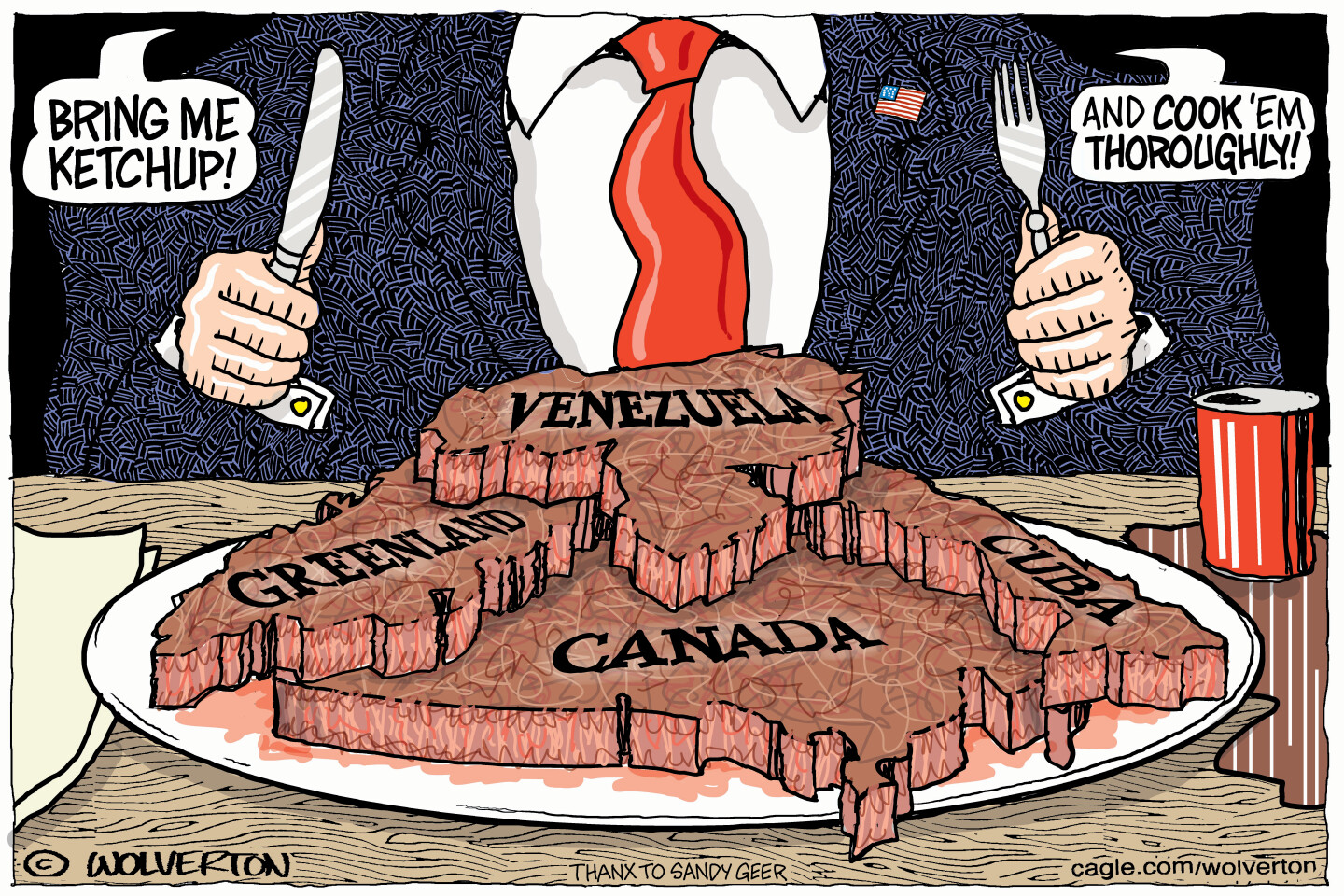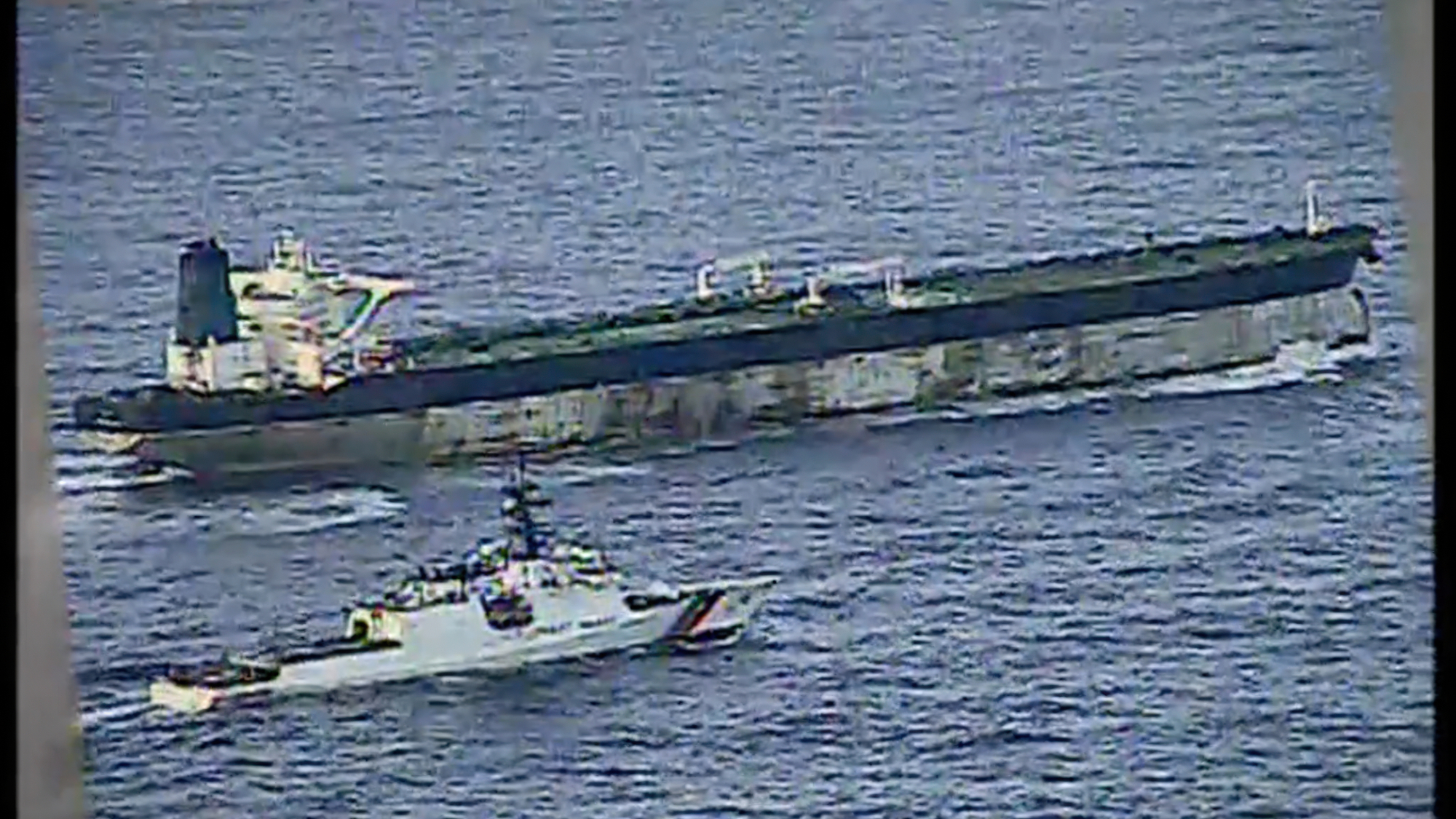Occupy Wall Street: A protest timeline
A relatively small gathering of young anarchists and aging hippies in lower Manhattan has spawned a national movement. What happened?

This article — originally published on Oct. 7 — was last updated on Nov. 21. Scroll down for the latest updates.
The Occupy Wall Street protest began in September as a small encampment of mostly young activists with mostly inscrutable objectives that were mostly ignored by the media. Perhaps unsurprisingly, the protests quickly became a subject of ridicule. But then something funny happened: Occupy Wall Street exploded into a nationwide series of demonstrations drawing support from unions and mainstream liberal groups, and earning comparisons to the powerhouse Tea Party movement and revolutionary pro-democracy protesters in Egypt's Tahrir Square. How did that happen? Here, a look back at some key events:
June 9
The Week
Escape your echo chamber. Get the facts behind the news, plus analysis from multiple perspectives.

Sign up for The Week's Free Newsletters
From our morning news briefing to a weekly Good News Newsletter, get the best of The Week delivered directly to your inbox.
From our morning news briefing to a weekly Good News Newsletter, get the best of The Week delivered directly to your inbox.
Canadian anti-consumerist magazine Adbusters registers the domain name OccupyWallStreet.org.
July 13
Adbusters calls for a Sept. 17 protest, where "20,000 people flood into lower Manhattan, set up tents, kitchens, peaceful barricades, and occupy Wall Street for a few months," demanding "democracy not corporatocracy."
Aug. 23
A free daily email with the biggest news stories of the day – and the best features from TheWeek.com
"Hactivist" collective Anonymous releases a video pledging its support for the protest and encouraging its members to participate.
Sept. 9
Supporters of Occupy Wall Street start posting their photos and stories to a new "We Are the 99 Percent" Tumblr page, bemoaning that the beleaguered majority gets "nothing while the other 1 percent is getting everything."
Sept. 17
The protest begins, with about 1,000 people gathering in downtown Manhattan and walking up and down Wall Street. The protesters settle into Zuccotti Park, two blocks north of Wall Street.
Sept. 19
Roseanne Barr becomes the first celebrity to endorse Occupy Wall Street.
Sept. 20
Police start arresting mask-wearing protesters, using an arcane law dating back to 1845 that bans masked gatherings unless part of "a masquerade party or like entertainment."
Sept. 24
About 80 people are arrested during a permit-less march uptown, and video of the event — especially the use of pepper spray on a group of women — earns Occupy Wall Street its first major media coverage. An OWS-inspired protest starts in Chicago.
Sept. 26
Filmmaker Michael Moore addresses the crowd at Zuccotti Park. Noam Chomsky sends his regards.
Sept. 27
Actress Susan Sarandon and Princeton academic Cornel West show up at the protests.
Sept. 28
Transport Workers Union Local 100 becomes the first big union to support Occupy Wall Street via a member vote.
Sept. 30
An internet hoax that Radiohead will play for the protesters draws a crowd downtown.
Oct. 1
Some 700 protesters are arrested in a march across the Brooklyn Bridge. Some protesters say the police purposefully lured and trapped them on the multi-tiered bridge's road level; the police say they warned protesters to stay on the walkway level. The mass arrests push the protests to the front page of newspapers and the top of TV news broadcasts. OWS-inspired protests start in Washington, D.C., and Los Angeles.
Oct. 3
Protesters dressed as "corporate zombies," in full zombie regalia and clutching fake cash, parade down Wall Street. The protests have spread nationwide, including Boston, Memphis, Minneapolis, St. Louis, Hawaii, and Portland, Maine.
Oct. 5
At least 39 organizations, including New York City's largest labor unions and MoveOn.org, join Occupy Wall Street for a march through New York's financial district. Organizers say 10,000 to 20,000 people marched; the media puts the number somewhere below 15,000. In the evening, "mayhem breaks out" when crowds overrun police barriers and officers "swat protesters with batons and spray them with mace." Republican presidential candidate Herman Cain weighs in on Occupy Wall Street: "Don't blame Wall Street, don't blame the big banks, if you don't have a job and you're not rich, blame yourself!"
Oct. 6
About 4,000 protesters march in Portland, Ore. More demonstrations unfold in Houston, Austin, Tampa, and San Francisco. Asked about Occupy Wall Street, President Obama says: "I think it expresses the frustrations the American people feel, that we had the biggest financial crisis since the Great Depression, huge collateral damage all throughout the country... and yet you're still seeing some of the same folks who acted irresponsibly trying to fight efforts to crack down on the abusive practices that got us into this in the first place."
Oct. 7
Mayor Michael Bloomberg criticizes the protesters in a radio interview, saying they are "taking the jobs away from people working in this city" and that the protests are "not good for tourism."
Oct. 8
The Smithsonian National Air and Space Museum in Washington, D.C., shuts down after a crowd shows up to voice opposition to U.S. drone strikes abroad. The demonstrators are joined by members of the Occupy Wall Street offshoot Occupy D.C., and among them is conservative magazine editor Patrick Howley, who later admits to joining the protest to "mock and undermine" it. Meanwhile, the New York protesters, outgrowing Zuccotti Park, spill over into Washington Square Park.
Oct. 10
Mayor Bloomberg softens his earlier criticisms, and says protesters can stay in New York as long as they want — so long as they obey the law.
Oct. 13
Brookfield, the company that owns Zuccotti Park, announces that protesters must vacate the park at 7 a.m. on Oct. 14 so it can be cleaned. Brookfield promises that demonstrators will be let back in after the four-hour powerwashing, but says it plans to enforce park rules prohibiting tents, tarps, and sleeping in the park. Infuriated protesters view the announcement as Bloomberg's plan to shut down the movement, and begin cleaning the park themselves, also vowing to "defend the occupation" from police.
Oct. 14
Brookfield postpones its planned cleaning at the last minute, avoiding a standoff between the demonstrators and police.
Oct. 15
The wave of protests spreads worldwide, from Europe to the Americas to Asia. While the demonstrations are generally peaceful, violence erupts in Rome when rioters hijack the protest there. In New York, thousands of people march to the U.S. Armed Forces recruiting station in Times Square to protest spending on foreign wars.
Oct. 18
President Obama delivers a mixed message on Nightline, saying he "understands the frustrations" of the protesters, but that the movement is "not that different from some of the protests we saw coming form the Tea Party."
Oct. 21
The host of an opera radio show aired by NPR affiliates is fired for participating in the Occupy D.C. movement, sparking controversy.
Oct. 24
Progressive icon Elizabeth Warren takes some of the credit for the movement, telling Newsweek that she "created much of the intellectual foundation for what [the protesters] do."
Oct. 25
The Egyptian activists who toppled Hosni Mubarak lend their support to the protesters in the U.S. and Europe, issuing a statement published by The Guardian. In Oakland, Calif., police clear about 170 protesters from their encampment outside of City Hall and arrest 97 demonstrators. When hundreds of protesters return later in the day, police fire tear gas canisters in to the crowd.
Nov. 5
Protesters march on major banks and financial institutions in honor of "Bank Transfer Day" — an attempt to urge Americans to move their money from big corporate banks to smaller community credit unions. In the month leading up to Bank Transfer Day, an estimated 600,000 people pulled their cash out of major banks.
Nov. 15
In Oakland, police arrest 20 people and clear protesters from the plaza where they had been living; the mayor's legal adviser resigns in protest. And at 1.am. in New York City, police begin evicting protesters from Zuccotti Park on Mayor Bloomberg's orders, arresting those who refuse to leave and barring reporters from getting close to the scene. A judge rules that although the protesters do not have a First Amendment right to camp out in the park, they are allowed to return to Zuccotti sans tents and tarps.
Nov. 17
In honor of the movement's two-month anniversary, and in response to the eviction of demonstrators from Zuccotti Park, hundreds of protesters march toward the New York Stock Exchange and eventually occupy other locations throughout the city. Other Occupiers hold similar demonstrations across the country — in Los Angeles, Dallas, Denver, and several other cities. Hundreds of people are arrested.
Nov. 19
Campus police at the University of California, Davis, pepper spray protesters who are peacefully obstructing a public walkway. Footage of the incident quickly goes viral online, prompting the school's chancellor to place the offending officers on leave and order an investigation.
Sources: ABC News, Adbusters, AP (2), Daily Finance, Gawker (2), Gothamist, The Guardian, Huffington Post, Mother Jones, MyFoxNY, New York, New York Times (2), NY Daily News, ThinkProgress, Turnstyle, USA Today, Wall Street Journal, Wash. Post, Wikipedia
-
 How to rekindle a reading habit
How to rekindle a reading habitThe Week Recommends Fall in love with reading again, or start a brand new relationship with it
-
 Political cartoons for January 8
Political cartoons for January 8Cartoons Thursday’s political cartoons include a well-done steak, a silenced protester, and more
-
 US nabs ‘shadow’ tanker claimed by Russia
US nabs ‘shadow’ tanker claimed by RussiaSpeed Read The ship was one of two vessels seized by the US military
-
 The billionaires’ wealth tax: a catastrophe for California?
The billionaires’ wealth tax: a catastrophe for California?Talking Point Peter Thiel and Larry Page preparing to change state residency
-
 Bari Weiss’ ‘60 Minutes’ scandal is about more than one report
Bari Weiss’ ‘60 Minutes’ scandal is about more than one reportIN THE SPOTLIGHT By blocking an approved segment on a controversial prison holding US deportees in El Salvador, the editor-in-chief of CBS News has become the main story
-
 Has Zohran Mamdani shown the Democrats how to win again?
Has Zohran Mamdani shown the Democrats how to win again?Today’s Big Question New York City mayoral election touted as victory for left-wing populists but moderate centrist wins elsewhere present more complex path for Democratic Party
-
 Millions turn out for anti-Trump ‘No Kings’ rallies
Millions turn out for anti-Trump ‘No Kings’ ralliesSpeed Read An estimated 7 million people participated, 2 million more than at the first ‘No Kings’ protest in June
-
 Ghislaine Maxwell: angling for a Trump pardon
Ghislaine Maxwell: angling for a Trump pardonTalking Point Convicted sex trafficker's testimony could shed new light on president's links to Jeffrey Epstein
-
 The last words and final moments of 40 presidents
The last words and final moments of 40 presidentsThe Explainer Some are eloquent quotes worthy of the holders of the highest office in the nation, and others... aren't
-
 The JFK files: the truth at last?
The JFK files: the truth at last?In The Spotlight More than 64,000 previously classified documents relating the 1963 assassination of John F. Kennedy have been released by the Trump administration
-
 'Seriously, not literally': how should the world take Donald Trump?
'Seriously, not literally': how should the world take Donald Trump?Today's big question White House rhetoric and reality look likely to become increasingly blurred